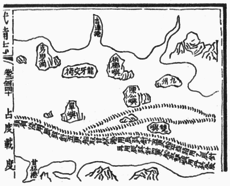The Cameron Highlands (Malay: Tanah Tinggi Cameron) is one of Malaysia’s most extensive hill stations. The size of Singapore, it occupies an area of 712 square kilometres (275 sq mi). To the north, its boundary touches that ofKelantan; to the west, it shares part of its border with Perak.
Situated at the northwestern tip of Pahang, the “Camerons” is approximately 90 kilometres (56 mi) from Ipoh, about 200 kilometres (120 mi) from Kuala Lumpur or about 355 kilometres (221 mi) from Kuantan, the capital of Pahang. It is the smallest constituency in Pahang.
Discovered by Sir William Cameron in 1885, the outpost consists of three districts, namely Ringlet (5,165 hectares),Tanah Rata (2,081 hectares) and Ulu Telom (63,981 hectares). Its eight sub-districts are Ringlet, Tanah Rata (the administrative centre), Brinchang, the Bertam Valley, Kea Farm, Tringkap, Kuala Terla and Kampung Raja. All are nestled at elevations ranging from 1,100 metres (3,600 ft) to 1,600 metres (5,200 ft) above sea level.
The mean annual temperature of the retreat is about 18 °C (64 °F). During the day, the temperature seldom rises over 25 °C (77 °F); at night, it rarely drops to as low as 9 °C (48 °F) at the higher reaches.[2]
The resort has a diverse population of more than 38,000 people. It comprises Bumiputeras (Malay (7,321); others (5,668)), Chinese (13,099), Indians (6,988), non-Malaysian citizens (5,193), and other nationalities (202).[3] Most of the residents here are entrepreneurs, service industry employees, farm workers, retirees or government servants. The languages spoken are Malay, Mandarin, Tamil and English. Islam, Buddhism, Taoism, Hinduism, Christianity andSikhism are the main religions of the haven.
Developed in the 1930s, the tableland is one of the oldest tourist spots in Malaysia. Apart from its tea estates, the plateau is also noted for its cool weather, orchards, nurseries, farmlands, waterfalls, rivers, lakes, wildlife, mossy forest, golf course, hotels, places of worship, bungalows, Land Rovers, museum and its aborigines (Orang Asli).
The Cameron Highlands can be accessed by road via Tapah, Simpang Pulai, Gua Musang or Sungai Koyan. Tapahand Simpang Pulai are the two approaches from Perak. Gua Musang and Sungai Koyan are the entryways fromKelantan and Pahang, respectively.


